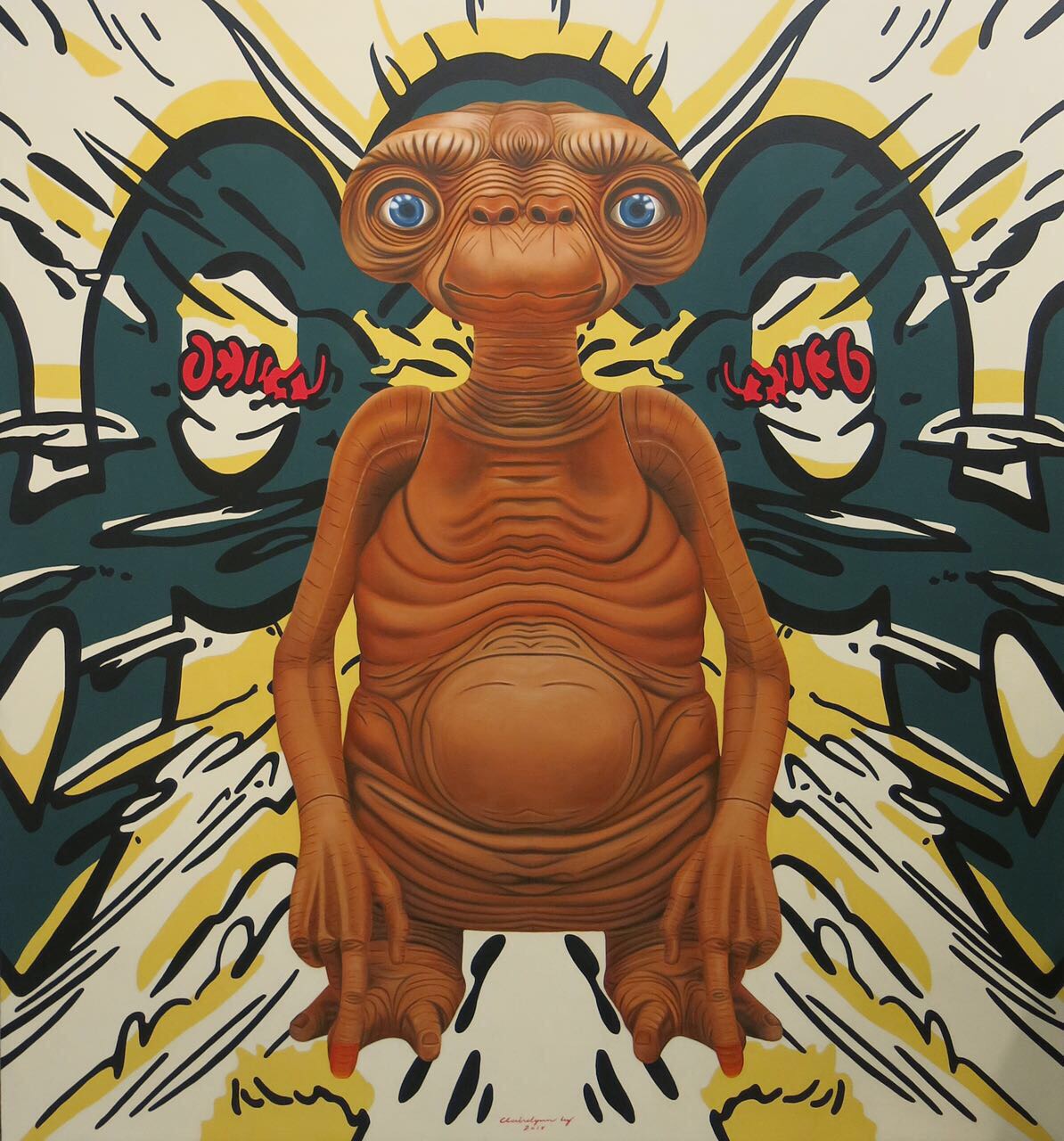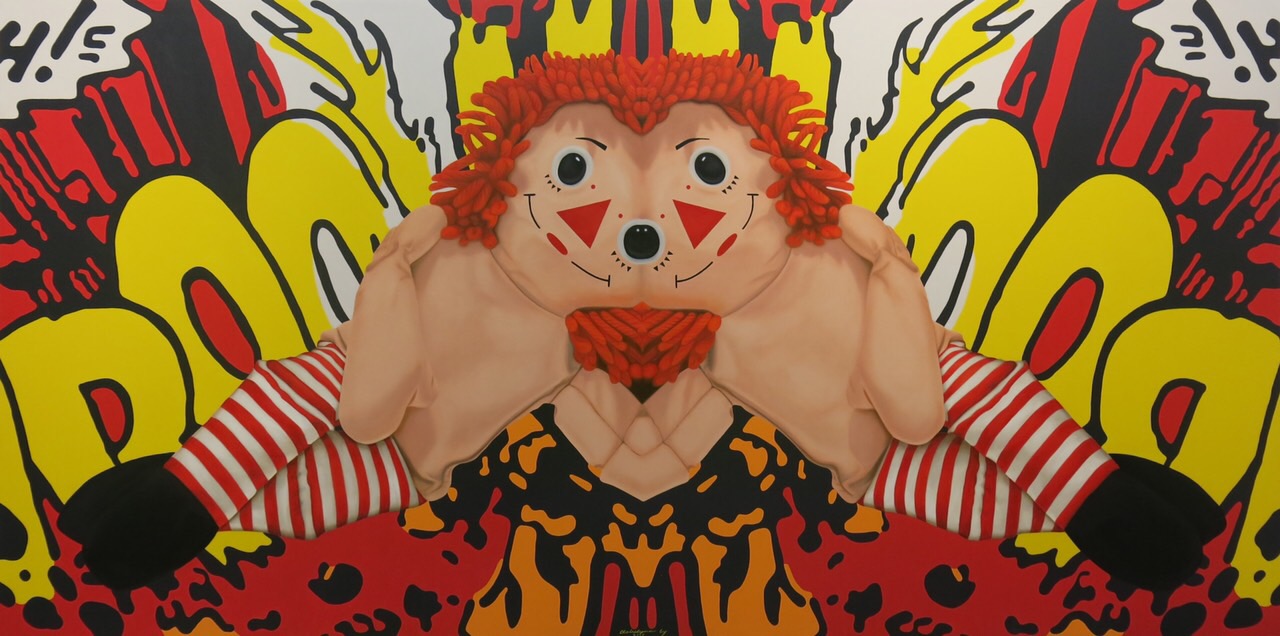Birds on Honeycomb
28 Sep - 29 Sep 2019
Clairelynn Uy
Clairelynn Uy | Birds on Honeycomb
Xavier (xICA) Art Fest - Solo Presentation
28 – 29 September 2019
Clairelynn Uy mashes up the language of comics with figures from popular culture—two visual worlds that evoke an orderly unity in our assumption that they operate outside the periphery of fine art, particularly painting. But these works, despite their gloss, are paintings, made by a human hand, the artist’s. This is the initial paradox. Her hand renders the figures into recognizability, while at the same time fracturing the image. The left is a copy of the right (or vice versa), as though a mirror had been wedged between these two parts. But the mirroring device is implied—conceptual. The symmetry is repetition, folded upon itself. Along the central axis of the work, the split/stitch is visible. What you have is the second paradox: iconography versus iconoclasm. What is built is simultaneously destroyed. Where is, after all, the other half? Through her method of repetition-as-symmetry, the artist pulls the rug beneath our feet, introduces instability. She doesn’t want us, the viewers, to see the work as mere repeat of what we are already familiar with. This is the third paradox: between what we see and what it refers. In the repetition not only of the figure but of the abstract elements—the typography, the splotches—the artist underscores the flatness of the support. Because of this, the works enter the terrain of the abstract, but the figure, while split, stares back at us. This is the fourth paradox. The fifth, which is perhaps the most urgent, is the tension of seriality that is repeated not in another work, but within it, as if to introduce further compression to the narrative of the work. The artist rejects narrative, but embraces the possibility of another story line—the one in loop, that goes back in itself. We begin to embrace, as the title suggests, not the impossibility of birds on honeycomb but the resulting complexity in their implied relationship, which rests on the simple technique of painting one-half of the work twice. This is a subversion of painting—and its triumph.



